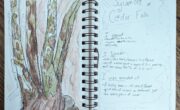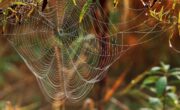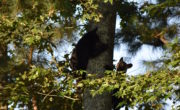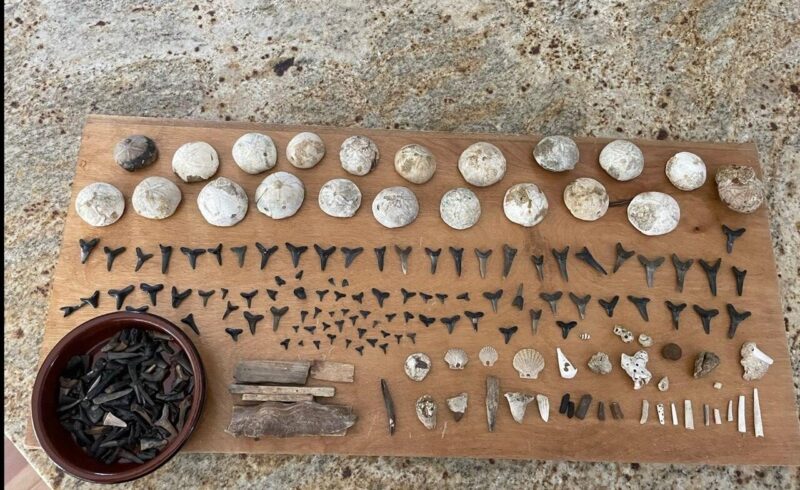
Have you ever wanted to be an archaeologist or paleontologist, or to discover precious stones? This week, I interviewed two of my dear friends, Davis and Tyler, about their hobbies of fossil-hunting and gem mining! Below are some of their best stories and tricks of the trade.
Finding Fossils
Davis learned to hunt for fossils in Mississippi with her grandfather. Near Jackson Mississippi, they usually hunt for sand dollars, small sharks’ teeth, and fish jawbones. Regarding the Northern part of the state, she says, “it’s really diverse up there because of the type of rock and sediment, but you’ll find vertebrae, bigger bones…also you find crabs, lobsters, and [fossilized] plant life.”
How does she spot these things, or even know where to look? Davis recommends fossil-hunting in valleys or “hollows” between two hills, and especially in creeks or valleys with rocky beds. As another tip, she suggests researching the terrain on a larger scale: “Look up different bands of the U.S., because a lot of the U.S. used to be covered by ocean… You can look at different formations and go from there. Memphis, Tennessee to Tupelo has a good spot, and then it goes down into West and Southern Alabama; and there’s different bands along latitudes.”
*Note: be sure to carefully research the fossil-hunting regulations in your chosen area. THIS SITE is a good place to start when researching laws and restrictions.
Once you’ve found a spot, Davis says, just pick up “anything that seems interesting.” Even if it isn’t a fossil, it might be a cool rock, so it’s a win-win! Sharks’ teeth in particular have a tell: they have a dull sheen in sunlight. “It’s not reflective,” she explains, “but it bounces the light in a different way than the other rocks.”
Davis’ coolest find to date has been a nephropida lobster (Hoploparia tennesseensis) fossil from the cretaceous period– the largest specimen ever found in Mississippi!
Rock Hunting
Tyler, on the other hand, took up rock-hunting more recently. His hobby really kicked off in college, when he got a chance to lead a gem mining trip to a designated mine near Abbeville, South Carolina. “That was the first time I got to hunt for my own rocks,” he says. “It sort of opened my eyes to the joy of finding them myself…. There’s a joy of getting to dig through the dirt and find something that no one’s put there.”
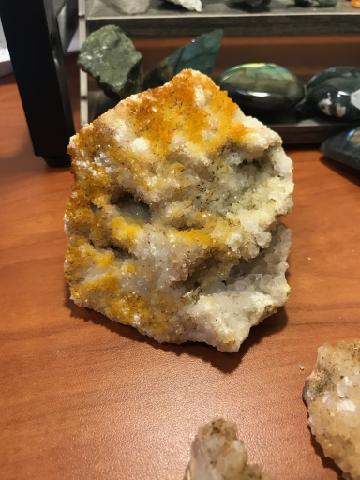
His tips are as follows:
- First, research the area where you plan on hunting, to be sure you are likely to find something! He suggests to look for areas which have previously been used for mines (again, check local regulations), and designated gem-mining locations.
- Secondly, know what you’re looking for. Some rare rocks and minerals might not look special at first, while other things like “a regular creek rock, or quartz,” might be pretty, but deceptively common.
- Finally, “rain is a really valuable thing. … Depending on what time you go, things that will have been buried under the surface are getting exposed to the air.” If you’re willing to get a little muddy, a recent (or ongoing) rainstorm might help reveal exciting discoveries.
One of Tyler’s favorite finds of all time– even when compared to pieces that he’s bought for his rock collection– is a fist-sized piece “covered entirely with crystals… There’s different layers, there’s different sizes to it– a little bit of it has this amethyst sort of purplish tint.” Gem mines can yield some remarkable finds. I myself have a large prism of amethyst about as long as my finger from the same kind of mining trip!
I can’t emphasize enough that it is key to ensure you’re operating within the bounds of the law as a fossil- or rock-hunter, and respecting private property– but if you’re in the clear, especially at pre-determined sites which sell tickets to treasure seekers, hunting for your own natural treasure can be one of the most fun and rewarding outdoor adventures ever!




